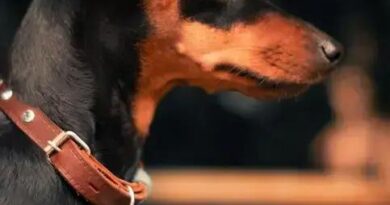What is how to groom a dog
Understanding Dog Grooming
Dog grooming is an essential aspect of pet care that involves maintaining a dog’s hygiene and appearance. It encompasses various practices, including bathing, brushing, nail trimming, and ear cleaning. Grooming not only keeps your dog looking good but also contributes to their overall health and well-being. Regular grooming helps to prevent skin issues, matting, and other health problems that can arise from neglect.
The Importance of Regular Grooming
Regular grooming is crucial for all dog breeds, regardless of their coat type. It helps to remove dirt, debris, and loose hair, which can accumulate and lead to skin irritations. Additionally, grooming sessions provide an opportunity to check for any abnormalities, such as lumps, bumps, or parasites. By establishing a consistent grooming routine, pet owners can ensure their dogs remain healthy and comfortable.
Choosing the Right Grooming Tools
To effectively groom your dog, it’s essential to have the right tools. Depending on your dog’s coat type, you may need a variety of brushes, combs, and grooming clippers. For example, long-haired breeds often require a slicker brush and a wide-toothed comb, while short-haired breeds may only need a rubber grooming mitt. Investing in quality grooming tools can make the process easier and more enjoyable for both you and your dog.
Bathing Your Dog
Bathing is a fundamental part of dog grooming. It’s important to use a dog-specific shampoo that is gentle on their skin and coat. The frequency of baths depends on your dog’s breed, activity level, and skin condition. Generally, most dogs benefit from a bath every 4 to 6 weeks. During the bathing process, be sure to rinse thoroughly to remove all shampoo residue, as leftover product can irritate the skin.
Brushing Techniques for Different Coat Types
Brushing is a vital grooming step that helps to remove tangles and mats while distributing natural oils throughout your dog’s coat. Different coat types require different brushing techniques. For instance, curly-coated breeds may need a slicker brush to prevent matting, while double-coated breeds benefit from an undercoat rake to remove loose fur. Understanding your dog’s coat type will help you choose the right brushing technique for optimal results.
Nail Trimming Essentials
Nail trimming is another critical aspect of grooming that is often overlooked. Long nails can cause discomfort and lead to mobility issues for your dog. It’s recommended to trim your dog’s nails every 3 to 4 weeks. If you’re unsure about how to trim nails safely, consider consulting a professional groomer or veterinarian. Using the right tools, such as dog nail clippers or a nail grinder, can make the process smoother and less stressful for your pet.
Cleaning Your Dog’s Ears
Ear cleaning is an important part of grooming that helps to prevent infections and maintain your dog’s ear health. Dogs with floppy ears are particularly prone to ear issues, so regular cleaning is essential. Use a vet-recommended ear cleaner and cotton balls to gently wipe the outer ear canal. Avoid inserting anything deep into the ear, as this can cause injury. Regular ear checks can help catch any problems early.
Grooming for Specific Breeds
Different dog breeds have unique grooming needs based on their coat type and characteristics. For example, breeds like Poodles require regular professional grooming to maintain their signature look, while others, like Beagles, may need less frequent grooming. Researching your specific breed’s grooming requirements will help you establish an effective grooming routine that meets their needs.
Professional Grooming Services
While many pet owners choose to groom their dogs at home, professional grooming services can provide a higher level of care and expertise. Professional groomers are trained to handle various breeds and can offer services such as breed-specific cuts, de-shedding treatments, and more. If you’re unsure about grooming your dog yourself or if your dog has special needs, consider seeking the help of a professional groomer.
Creating a Positive Grooming Experience
To ensure that grooming is a positive experience for your dog, start slowly and use plenty of praise and treats. Gradually introduce your dog to grooming tools and techniques, allowing them to become comfortable with the process. Consistency is key; regular grooming sessions will help your dog associate grooming with positive experiences, making it easier for both of you in the long run.



